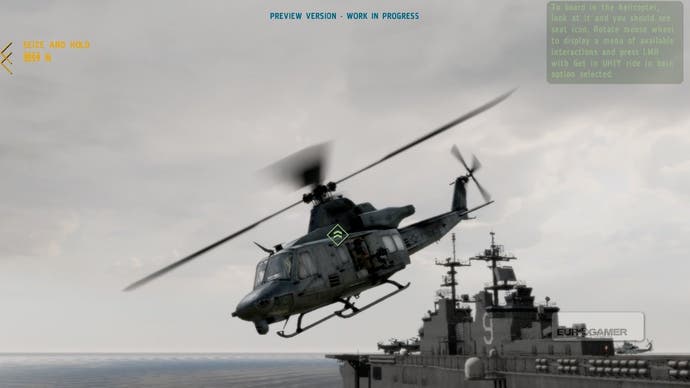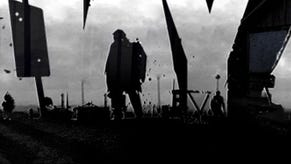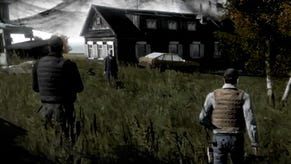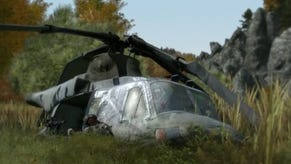ArmA II
Lord of war.
That army, incidentally, is part fellow US troops, and part a faction or factions of your choosing. You'll end up helping out and being helped by one of the armies warring over ownership of the fictional, 225 square-kilometre island of Chenarus, each of which provides different troops and resources to you - and, naturally, sets one or more of the other factions against you. This could be what S.T.A.L.K.E.R: Clear Sky tried (and sadly struggled) to offer - freeform faction vs. faction warfare in a beautiful, living world. Chenarus is packed full of civilian towns, which you have the option to protect or decimate based on your own agenda.
The plebs' reaction to you will vary depending on how you've treated them and any factions with which they're associated. You even have the option to interrogate them, which can dredge up vital enemy info - a patrol spotted so many clicks away a couple of minutes ago, for instance. If you've been behaving like Captain Bastard, however, they're not going to want to help. Oh yeah, and there's cows. And dogs and boar and hens and all sorts. Hooray for animals! Miserablists will argue there's no need for them - that our furry friends don't serve any real purpose, unless you're convinced pigs are a greater threat to world security than armed insurgents - but they reflect BIS' desire to get this right, to make a world and not simply a hub into which other people plug things.
Though, of course, it is that too. ArmA thrived despite a confused critical reception because of modders' extensive work adding to and tweaking it. ArmA incorporates much of the community's finest hours out of the box (BIS even hiring some of this fan army as freelance designers), but of course there's that astoundingly quick editor. The need for elaborate scripting is removed, with preset AI behaviours selectable from a drop-down menu, but the option to wade in deep remains. The really epic conversions will still require dedication and possibly a touch of madness, but now anyone can create and share a custom conflict. With 136 vehicles (each with 40 different sound samples, incredibly) there's scope to sketch out monstrously huge skirmishes - the number of on-screen units limited only by your processor.

And what of ArmA/OFP's other legacy, of embarrassing bugginess? Well, from my hours with this build, it certainly seems more robust than those did on release, but it would be a lie to say it was free of teething problems. Presentation values are significantly higher, the ArmA engine enjoying some mouth-watering treats to its lighting and draw distance, while the dialogue and story has this time been handled by a native English speaker rather than suffering dodgy translation. There are spots of missing or inaccurate text and this build suffered a couple of lock-ups, but generally, it seems a lot more polished than its predecessors.
Frankly, ArmA II should be forgiven a few minor misfires anyway - it's one of the most ambitious videogames ever made. If the final build gets even close to pulling it off, it deserves a place in history.
ArmA II is due out for PC on 19th June, with an Xbox 360 version due out later.









.jpg?width=291&height=164&fit=crop&quality=80&format=jpg&auto=webp)






